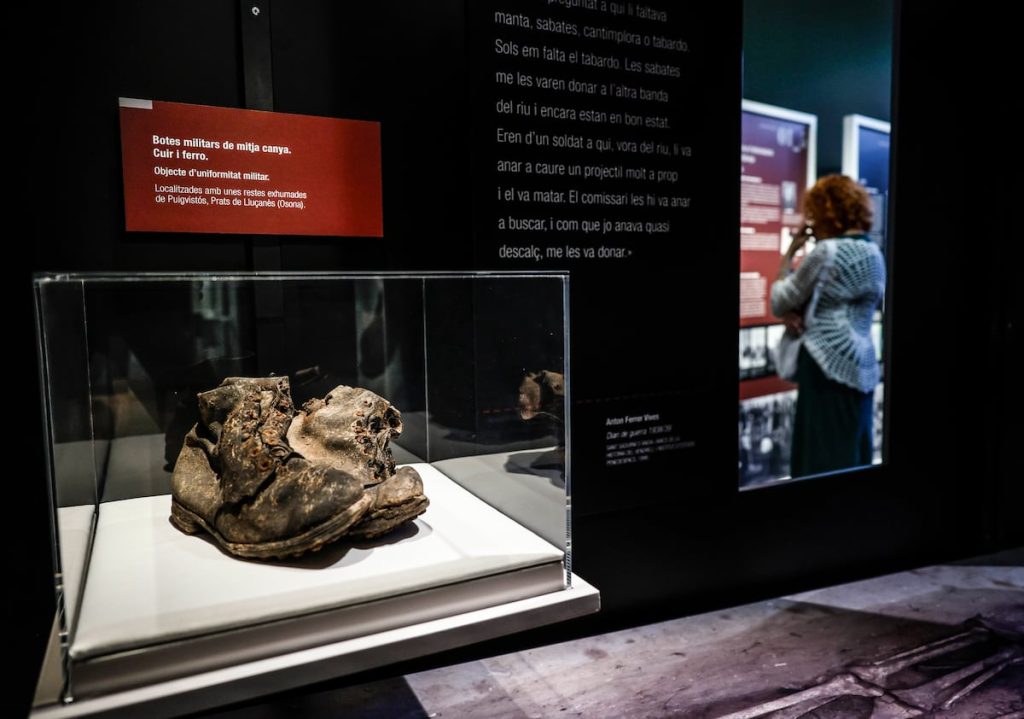The historical memory in Spain is currently a sensitive topic, especially after the President of the Balearic Parliament, Gabrielle le Senne, tore up a photo of three victims of Franco’s regime displayed by a socialist deputy during a recent parliamentary session. While regional governments where the PP and Vox govern together are pushing for historical revisionism through so-called “concord laws,” the Catalan government has opened an exhibition in Madrid to highlight the work of Catalan institutions in the exhumation of mass graves in recent decades. The exhibition, titled “Where are they? 85 years of exhumations of mass graves from the Spanish Civil War in Catalonia,” explains the process of search experienced by three specific families, as well as providing a practical guide on the identification of remains found in the graves.
The inauguration of the exhibition was presided over by the Minister of Justice, Rights, and Memory of the Generalitat, Gemma Ubasart y González, who emphasized the need to promote and fund memory policies to “sensitize” and “educate” generations that did not experience the Civil War, Franco’s regime, or even the Transition period. She stated that “memory is not about the past, but about a future of peace, human rights, coexistence, and democracy.” Concerned by the events in the Balearic Parliament, the minister warned that “the international of hate” is “more rampant than ever,” and stressed that it is an “obligation” to “weave a horizon of hope” to “combat regression” and “ensure that history does not repeat itself.”
The exhibition offers a historical journey through the exhumations carried out by the Generalitat, from the early days of the Civil War to recent milestones such as the creation of a registry of missing persons in 2003 which lists 7,592 individuals in its latest update. An interactive map created in 2010 shows data on up to 900 mass graves where, according to records, there are up to 13,000 deceased individuals. To illustrate the reality of families searching for their loved ones and the complexity of the search and identification process, the exhibition showcases three specific stories as examples. One story is that of Marcos Andrés Latorre, a Republican soldier missing since 1938 during the Battle of the Ebro. In 2008, his family registered him as a missing person with the Generalitat, leading to the discovery that he was transferred to the Valley of the Fallen in 1959 without their knowledge. A memorial was inaugurated in his honor in 2009, where relatives can pay tribute to disappeared soldiers.
Inside the exhibition, a graphic representation of a mass grave is displayed, detailing the search and identification process of bodies, as well as objects found in the graves such as a belt, spoon, comb, boots, and canteen. In recent times, historical memory has sparked controversies in Spain due to the push by regional governments of the PP and Vox parties against memorial laws. In Castilla y León and the Valencia Community, both parties have replaced existing legislation with so-called “concord laws,” revisionist in nature and based on false premises. They deny key aspects such as the nature of the Spanish Civil War being the result of a coup d’état in 1936 and avoid using the term “dictatorship” in the texts.
In Aragón, the bipartisan government repealed the regional memory law in February and is set to approve its own “concord law” in July. A similar path may be followed by the Balearic Islands, where the PP governs alone and recently approved the repeal of the regional memory law. The tearing of a photograph of three Franco regime victims by the Balearic Parliament President has prompted the government to refer the matter to the Prosecutor’s Office to investigate if it constitutes a hate crime. Additionally, the Minister of Culture announced that the government has initiated the necessary procedures to outlaw the Franco Foundation for “apologizing for Francoism and its leaders.”


